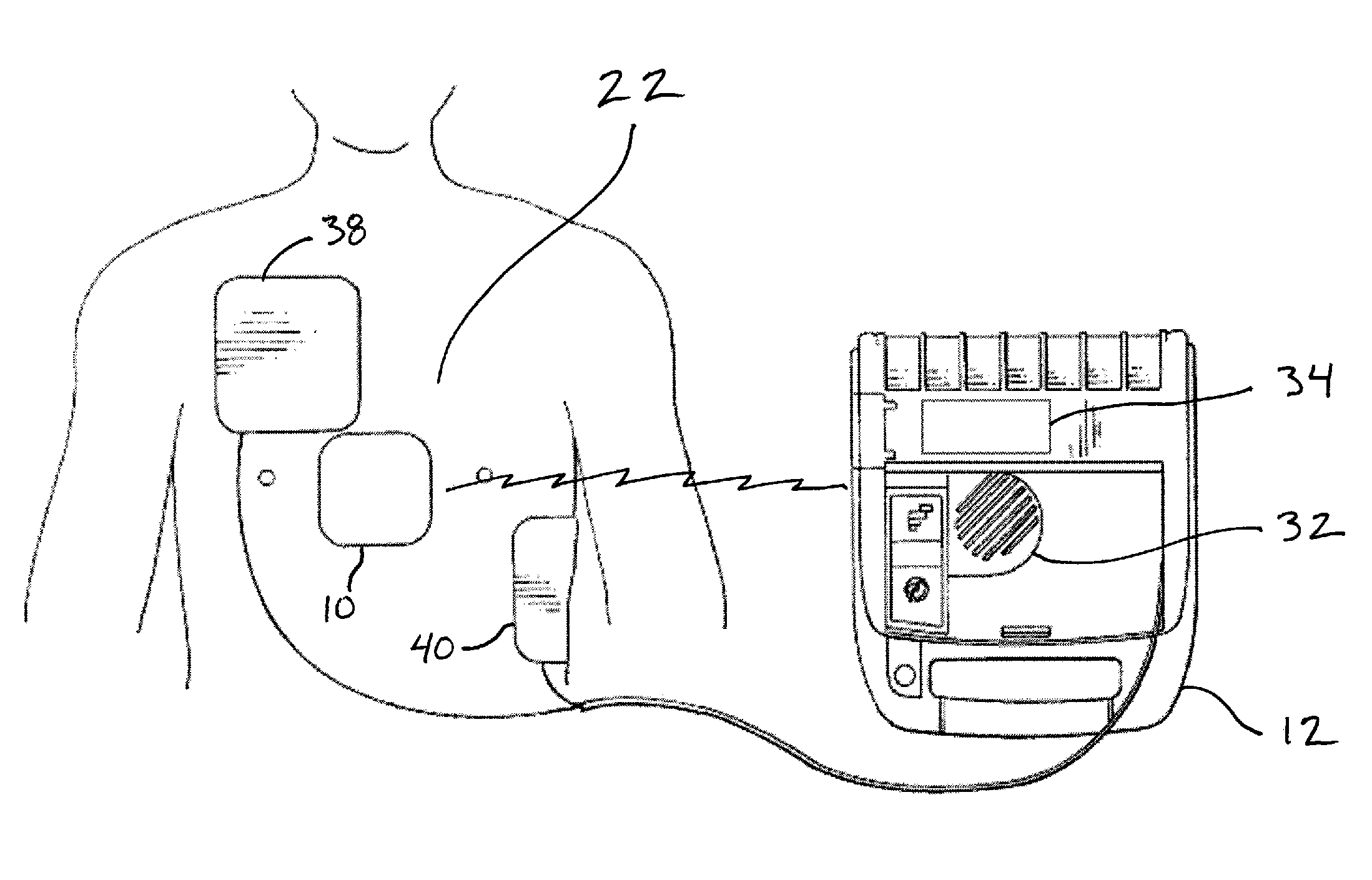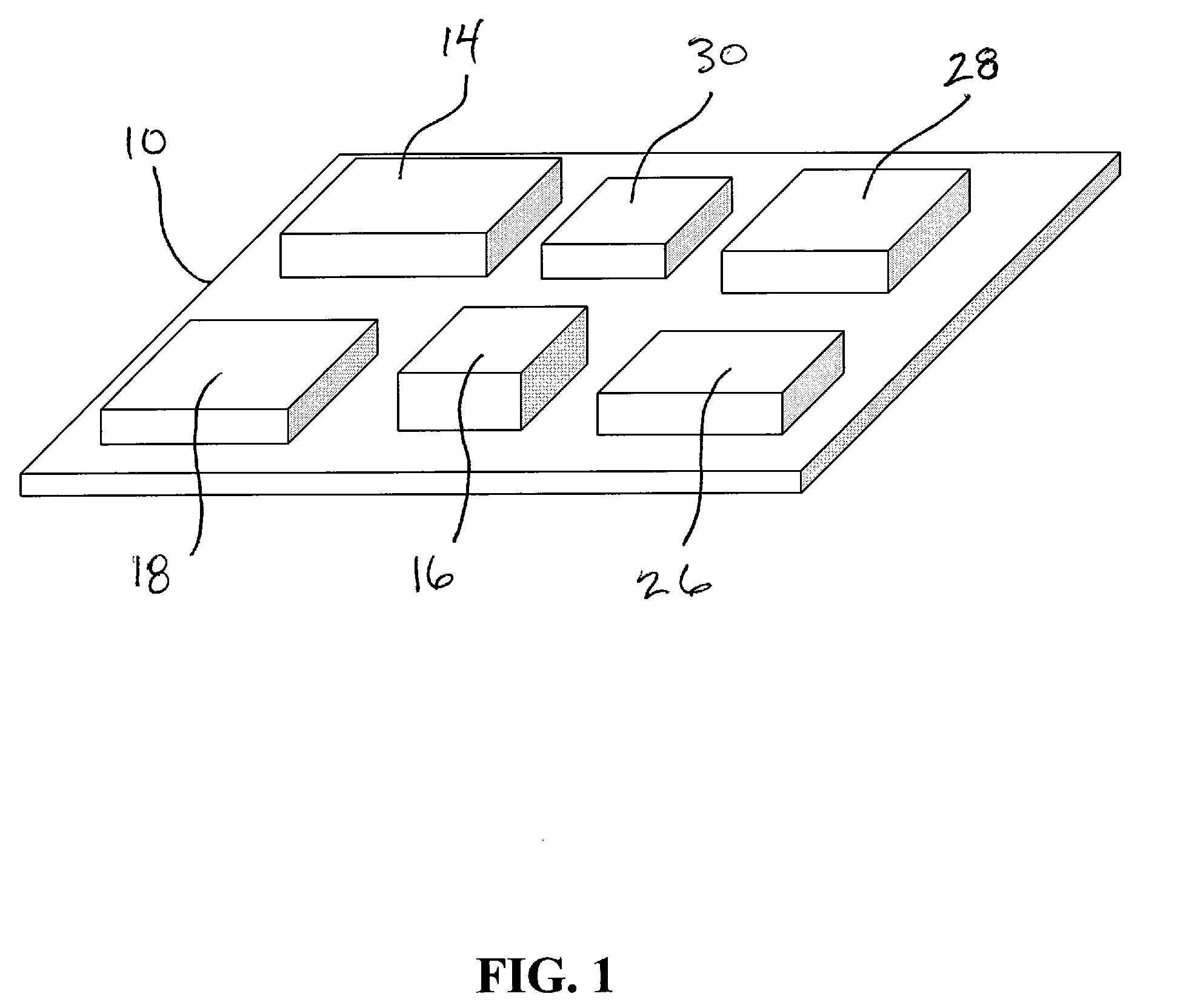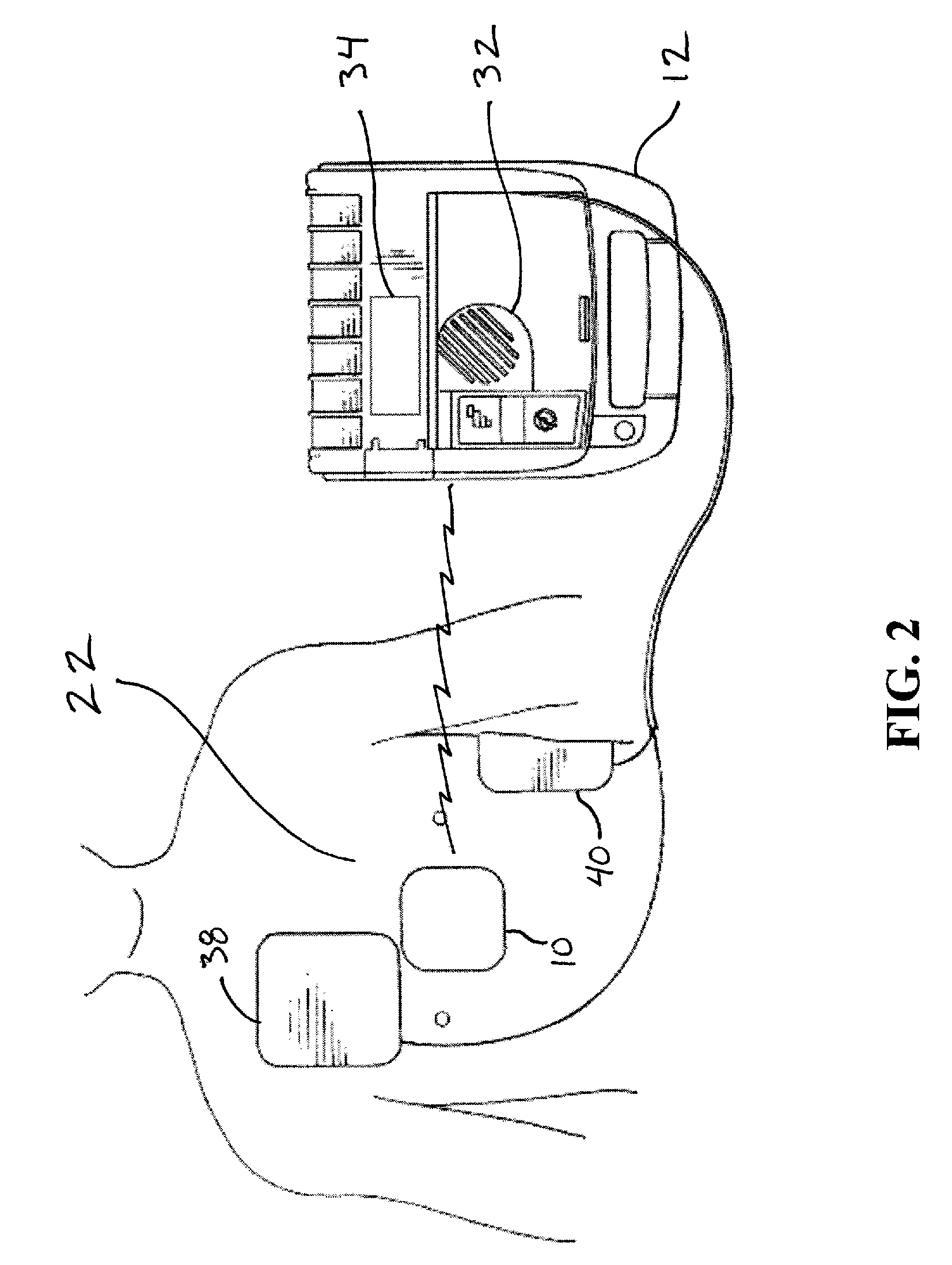Cpr feedback method and apparatus
a feedback method and a technology of cpr, applied in the field of cpr feedback method and apparatus, can solve the problems of difficult coordination, physical and mental demands, and difficulty in administering cpr
- Summary
- Abstract
- Description
- Claims
- Application Information
AI Technical Summary
Benefits of technology
Problems solved by technology
Method used
Image
Examples
Embodiment Construction
[0024]In the following detailed description of the present invention, numerous specific details are set forth in order to provide a thorough understanding of the present invention. However, it will be obvious to one skilled in the art that the present invention may be practiced without these specific details. In other instances, well-known methods, procedures, and components have not been described in detail so as to not unnecessarily obscure aspects of the present invention.
[0025]Referring to FIGS. 1-5, a chest compression detection device 10 is depicted. Device 10 includes a signal transmitter 14, a signal receiver 16, and a processor 18. In one embodiment, device 10 comprises an ultrasonic transducer. Transmitter 14 and receiver 16 are integrated into device 10. Processor 18 is operably coupled to both transmitter 14 and receiver 16. Processor 18 instructs transmitter 14 to send out an ultrasonic pulse 20, then counts the elapsed time for pulse 20 to reach receiver 16. Processor ...
PUM
 Login to View More
Login to View More Abstract
Description
Claims
Application Information
 Login to View More
Login to View More - R&D
- Intellectual Property
- Life Sciences
- Materials
- Tech Scout
- Unparalleled Data Quality
- Higher Quality Content
- 60% Fewer Hallucinations
Browse by: Latest US Patents, China's latest patents, Technical Efficacy Thesaurus, Application Domain, Technology Topic, Popular Technical Reports.
© 2025 PatSnap. All rights reserved.Legal|Privacy policy|Modern Slavery Act Transparency Statement|Sitemap|About US| Contact US: help@patsnap.com



